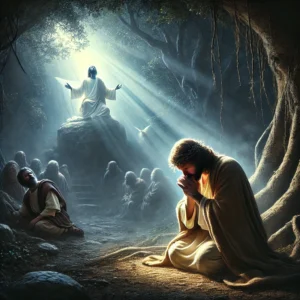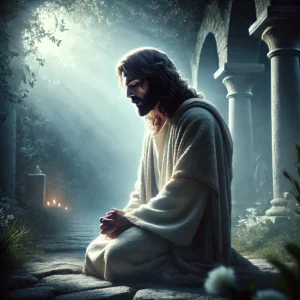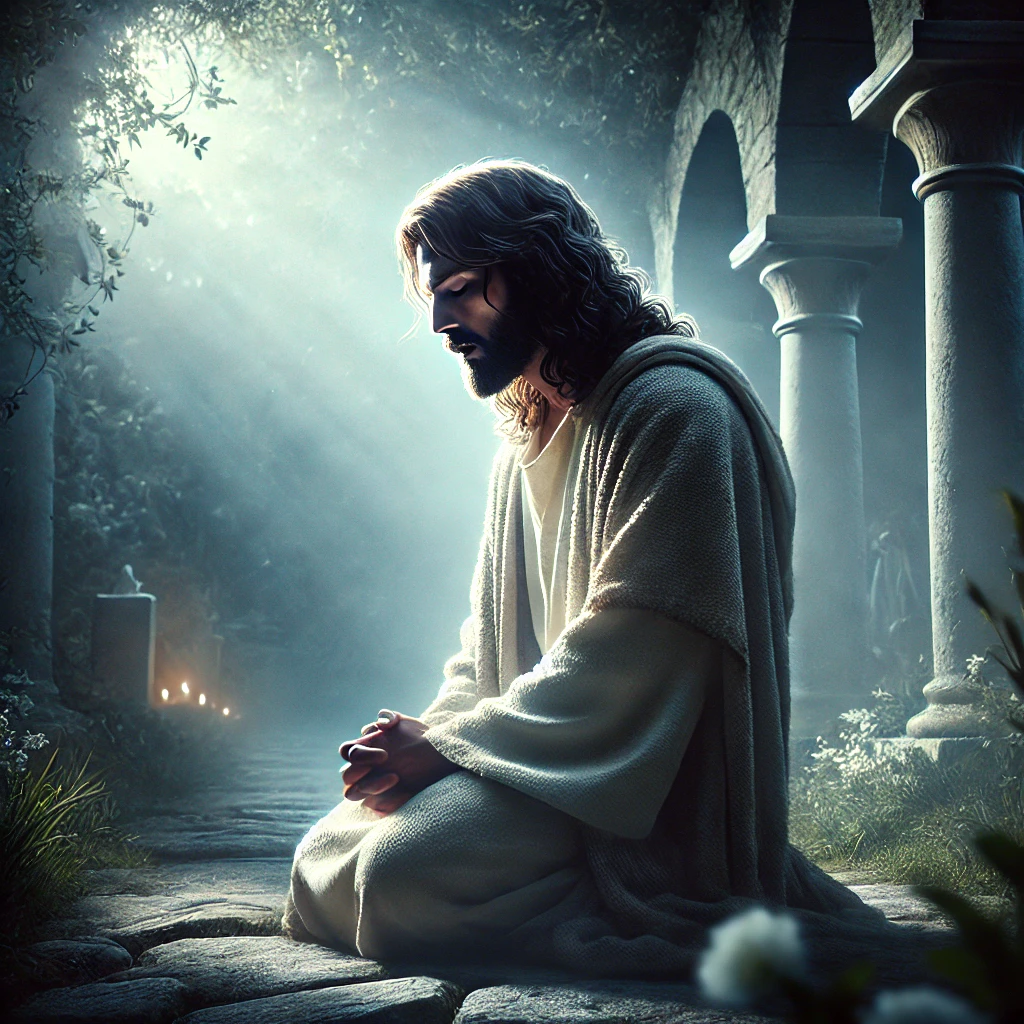
The scene of Jesus in the Garden of Gethsemane, just before his arrest, is one of the most emotionally charged and spiritually profound moments in the Gospels. This event, recorded in Matthew 26:36-46, Mark 14:32-42, and Luke 22:39-46, reveals both Jesus’ deep humanity and his divine commitment to fulfilling his mission. In the garden, we witness Jesus grappling with the immense weight of his impending sacrifice, offering a glimpse into the agony and surrender that precedes his journey to the cross.
The Humanity of Jesus: Agony and Fear
In Gethsemane, Jesus reveals his full human vulnerability. Knowing the suffering that awaits him—the betrayal, the torture, and ultimately the crucifixion—he experiences overwhelming sorrow. In Matthew 26:38, Jesus tells his disciples, “My soul is overwhelmed with sorrow to the point of death.” This moment shows Jesus as deeply human, feeling the fear, grief, and anguish that any person would in the face of imminent suffering.
His prayer, “My Father, if it is possible, may this cup be taken from me” (Matthew 26:39), expresses his inner turmoil. The “cup” symbolizes the impending suffering he must endure. Jesus’ plea for another way reflects his natural human desire to avoid pain and death, making this moment one of the most relatable in the Gospels. It reveals a Savior who fully understands the weight of human suffering, as he faced it himself.
Divine Mission: Surrendering to the Father’s Will

Despite his anguish, Jesus’ prayer ultimately ends in surrender to the divine plan. “Yet not as I will, but as you will” (Matthew 26:39). This powerful moment of submission reflects Jesus’ unwavering commitment to his mission of redemption. He acknowledges the Father’s greater purpose, even if it means enduring unimaginable pain.
In this act of surrender, Jesus models perfect obedience and trust in God’s will. It is a reminder that true faith often involves accepting hardship and sacrifice, trusting that God’s plan has a purpose beyond our understanding. Jesus’ acceptance of the cross demonstrates his divine role as the Savior, choosing to lay down his life for humanity, despite the personal cost.
Loneliness and Abandonment

Another poignant element of Jesus’ time in Gethsemane is the loneliness he experiences. Though he brought his closest disciples—Peter, James, and John—with him, they fall asleep while he prays. Jesus’ repeated return to find them asleep reflects a deep sense of isolation. “Couldn’t you men keep watch with me for one hour?” (Matthew 26:40), he asks, underscoring the fact that even his closest companions cannot fully comprehend or share the burden he bears.
This loneliness foreshadows the abandonment he will face during his trial and crucifixion, as even his closest followers will desert him. It emphasizes the solitude of sacrifice, where Jesus, despite the physical presence of others, must walk the path to the cross alone.
The Agony and the Angel
In Luke 22:44, it is described that Jesus was in such agony that his sweat became like drops of blood—an intense depiction of his suffering. This verse emphasizes the physical and emotional toll of his impending sacrifice. Yet, in the same account, an angel appears to strengthen him (Luke 22:43). This moment of divine support highlights the tension between Jesus’ deep suffering and the supernatural grace that sustains him through it.
Conclusion
In the Garden of Gethsemane, we see the emotional and spiritual depth of Jesus’ journey to the cross. His agony reflects his full humanity, as he grapples with fear, sorrow, and the overwhelming weight of sacrifice. Yet, through this anguish, he remains committed to his divine mission, surrendering to the Father’s will and choosing to endure suffering for the sake of humanity’s salvation. Gethsemane reveals both the vulnerability and strength of Jesus, offering a profound example of obedience, trust, and sacrificial love.



